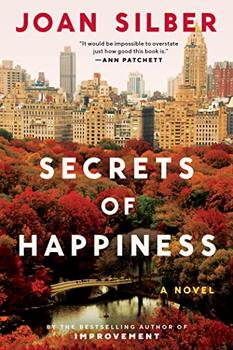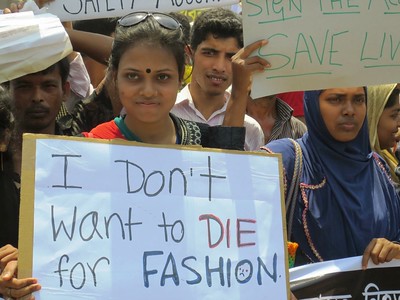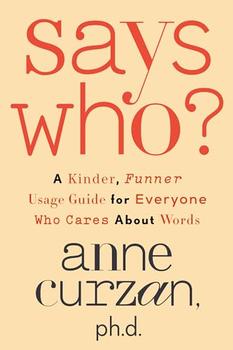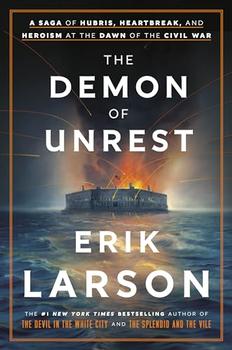Summary | Excerpt | Reviews | Beyond the Book | Read-Alikes | Genres & Themes | Author Bio

Critics' Opinion:
Readers' Opinion:
First Published:
May 2021, 288 pages
Paperback:
Jun 2022, 288 pages
 Book Reviewed by:
Book Reviewed by:
Elisabeth Herschbach
Buy This Book
This article relates to Secrets of Happiness
 In Joan Silber's Secrets of Happiness, Ethan's father, Gil, has a lucrative career in the women's clothing industry, frequently jetting off to parts of Asia to oversee the outsourcing of production. Elsewhere in the book, a character named Bud takes a job with an organization in Cambodia campaigning to improve working conditions in garment factories, reminding us of the flip side of Gil's success—the cheap labor that drives the profits of clothing companies like his.
In Joan Silber's Secrets of Happiness, Ethan's father, Gil, has a lucrative career in the women's clothing industry, frequently jetting off to parts of Asia to oversee the outsourcing of production. Elsewhere in the book, a character named Bud takes a job with an organization in Cambodia campaigning to improve working conditions in garment factories, reminding us of the flip side of Gil's success—the cheap labor that drives the profits of clothing companies like his.
In a bid to maximize profits, Western fashion retailers began outsourcing in the 1970s, offshoring garment and textile manufacturing to countries with low overhead costs, particularly in Asia. Today, almost 60 percent of the world's textiles and clothing are produced in Asia, with China, Bangladesh, Pakistan and Vietnam accounting for the largest share. Across the Asia-Pacific region as a whole, an estimated 65 million people work in garment factories, according to the International Labour Organization. That represents some 75 percent of all garment workers worldwide.
For the majority of workers in these factories, the low production costs that attract big-name apparel brands translate into long working hours, low pay and systemically hazardous working conditions. Worldwide, garment workers are among the lowest paid of any industry. In many Asian countries with large textile manufacturing industries, the wages of apparel workers fall far below a living wage, the bare minimum a person in that country needs to cover the basic necessities of life. In Bangladesh, the minimum wage for a garment worker is the equivalent of around $95 a month. That comes to barely $3 a day.
Faced with immense workloads and tight turnaround times, garment workers in many factories across Asia are forced to toil long hours without adequate breaks—and often without overtime pay or even a day off. "You see them come out of these factories where they work ten hours a day in suffocating heat, wages so low they can barely eat," as Bud says in Secrets of Happiness, describing the sweatshop conditions of Cambodian garment factories.
Those who fall short of their production targets may get their already meager pay docked or face threats and abuse, as one garment worker in Bangladesh told Human Rights Watch in an interview: "Whenever someone missed the target bosses started shouting at them. Sometimes they would also beat the workers. One of the supervisors once kicked me on the back just because I was talking to a fellow worker."
Workers who try to unionize, protest or organize for better working conditions often face attacks and retaliation. As a result, millions of garment workers across Asia still struggle to eke out a living under appalling conditions in factories that are stiflingly hot, unsanitary and poorly ventilated. Constant exposure to fiber dust and toxic chemicals from textile dyes puts workers at risk of respiratory problems and other illnesses. And unsafe working environments—including buildings with structural or electrical problems, lack of proper fire exits or sprinkling systems and inadequate safety protocols—raise the risk of fires, accidents and other workplace disasters.
The deadliest of these occurred in Dhaka, Bangladesh—where Tara, a young filmmaker in Secrets of Happiness, goes to conduct research for her documentary on the textile industry. In April 2013, Rana Plaza—an eight-story building containing five clothing factories—collapsed because of structural failures, killing 1,134 workers and injuring over 2,500. Although cracks had appeared in the building the day before, the garment factory owners ignored warnings to stay away and ordered workers to report the following day. Later, it emerged that the top four floors of the building had been constructed without building permits.
At the time of the Rana Plaza disaster, at least 29 global clothing brands were doing business with the factories in the building, according to Clean Clothes Campaign, a network of organizations working to improve labor conditions in the garment and sportswear industries. The tragedy brought international attention to the way that such companies profit from exploitative business practices that perpetuate inequalities in the global economy and keep millions of garment workers trapped in poverty. It also sparked a growing movement to reform the fashion world from within. To find out more about some of these initiatives, check out the many resources available from the Clean Clothes Campaign and other organizations, such as Fashion Revolution, the Fair Wear Foundation and Labour Behind the Label.
Garment workers rally on the one-year anniversary of the Rana Plaza collapse. Photo courtesy of Solidarity Center (CC BY-ND 2.0)
Filed under Society and Politics
![]() This "beyond the book article" relates to Secrets of Happiness. It originally ran in June 2021 and has been updated for the
June 2022 paperback edition.
Go to magazine.
This "beyond the book article" relates to Secrets of Happiness. It originally ran in June 2021 and has been updated for the
June 2022 paperback edition.
Go to magazine.




Our wisdom comes from our experience, and our experience comes from our foolishness
Click Here to find out who said this, as well as discovering other famous literary quotes!
Your guide toexceptional books
BookBrowse seeks out and recommends the best in contemporary fiction and nonfiction—books that not only engage and entertain but also deepen our understanding of ourselves and the world around us.